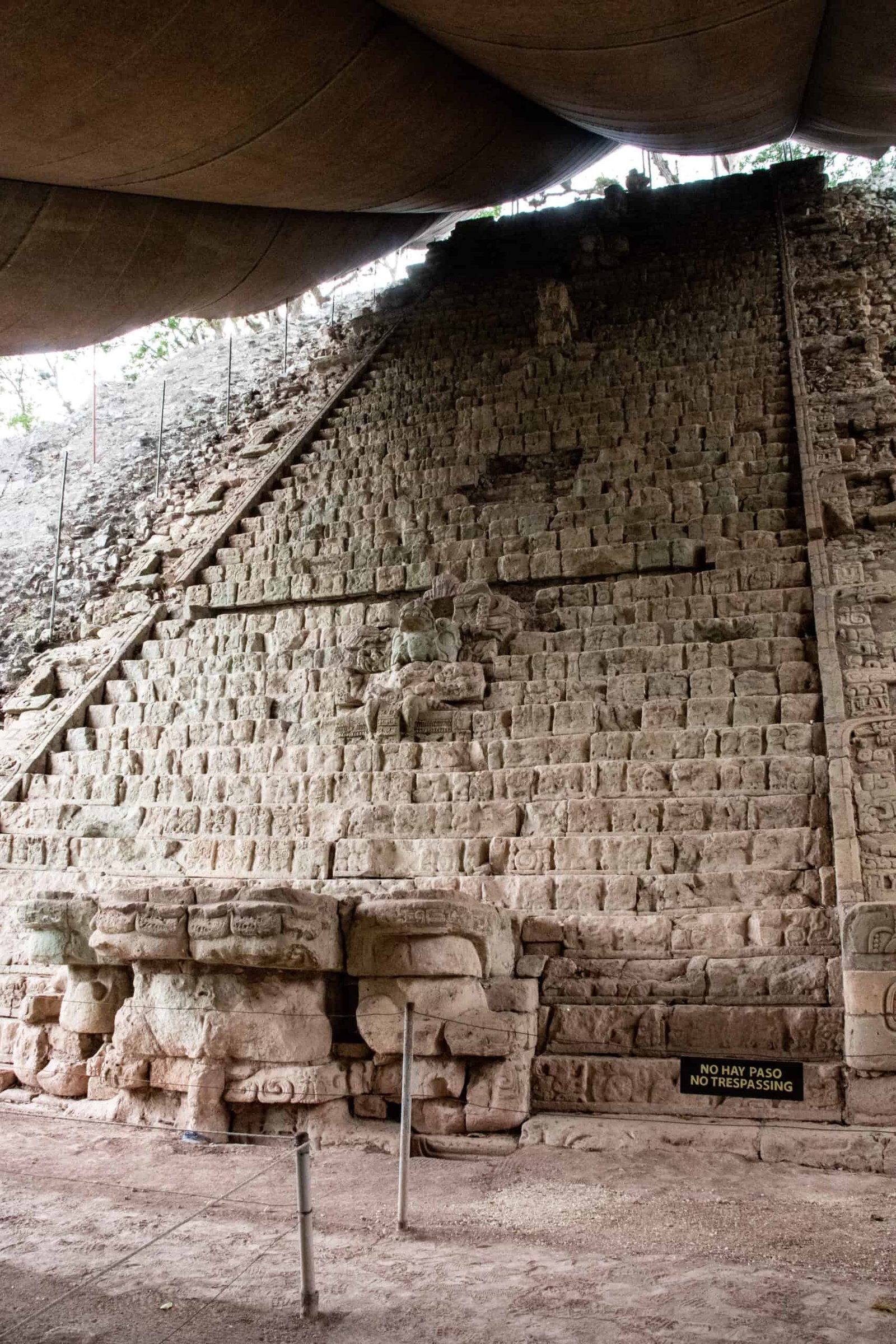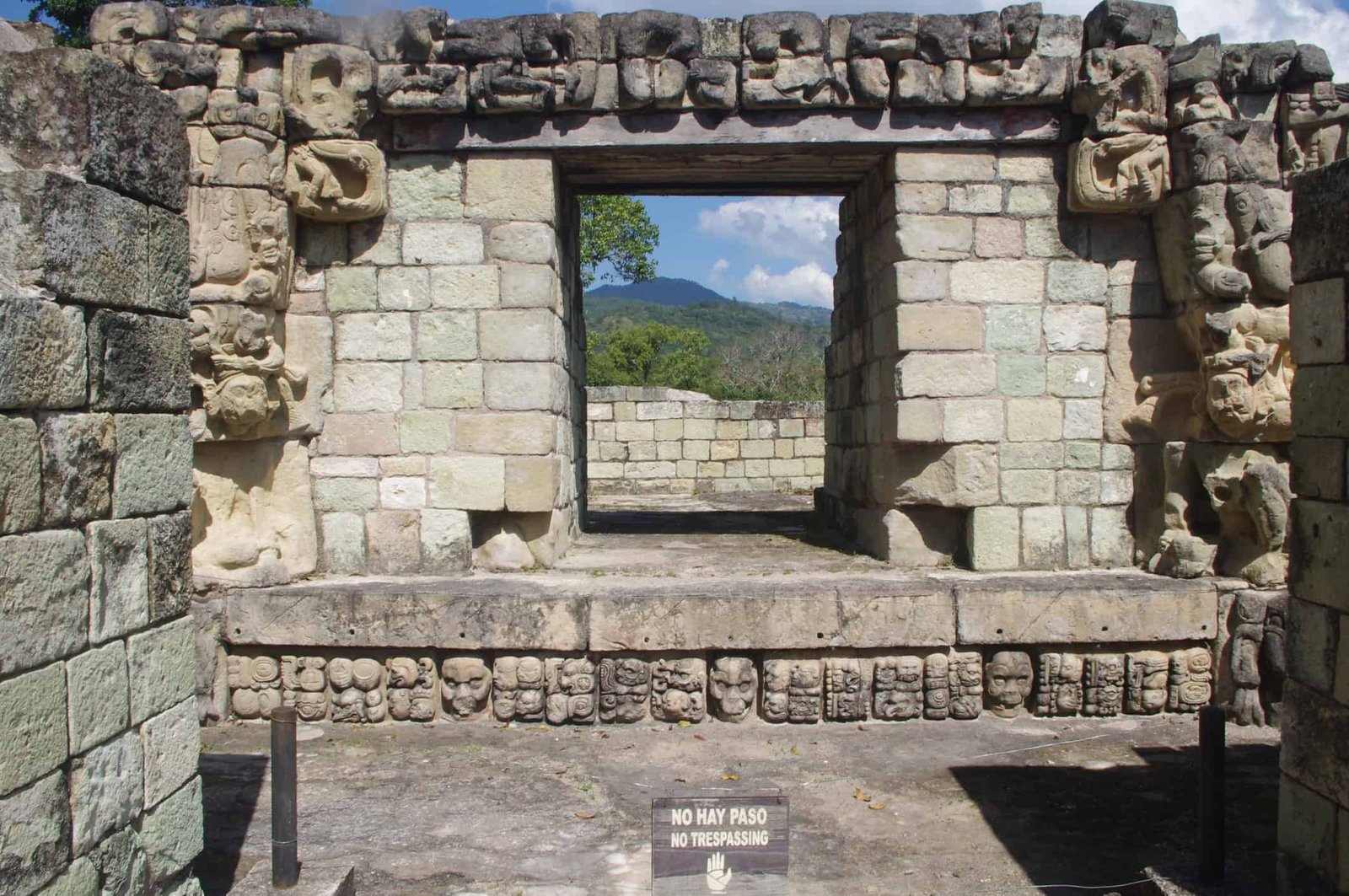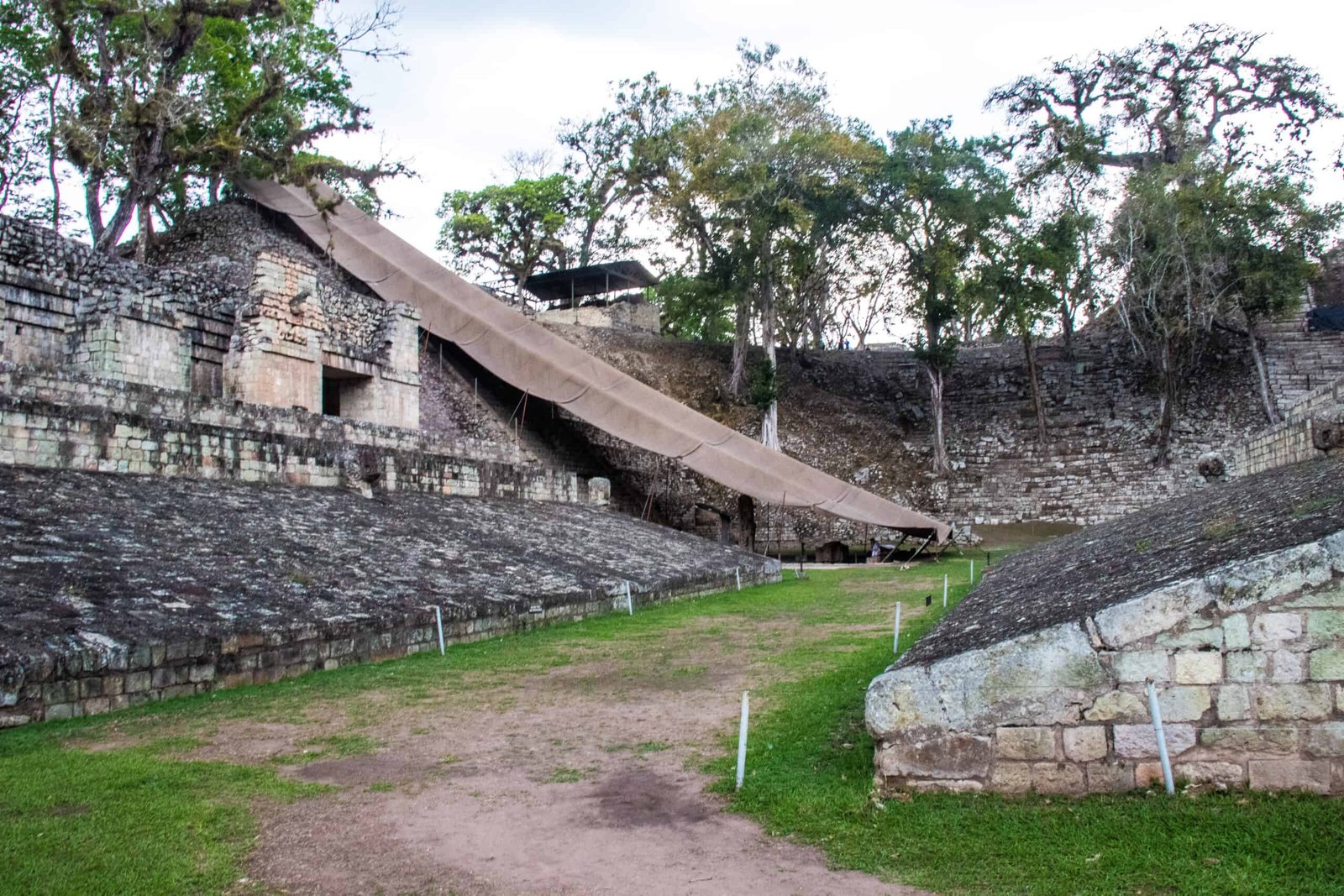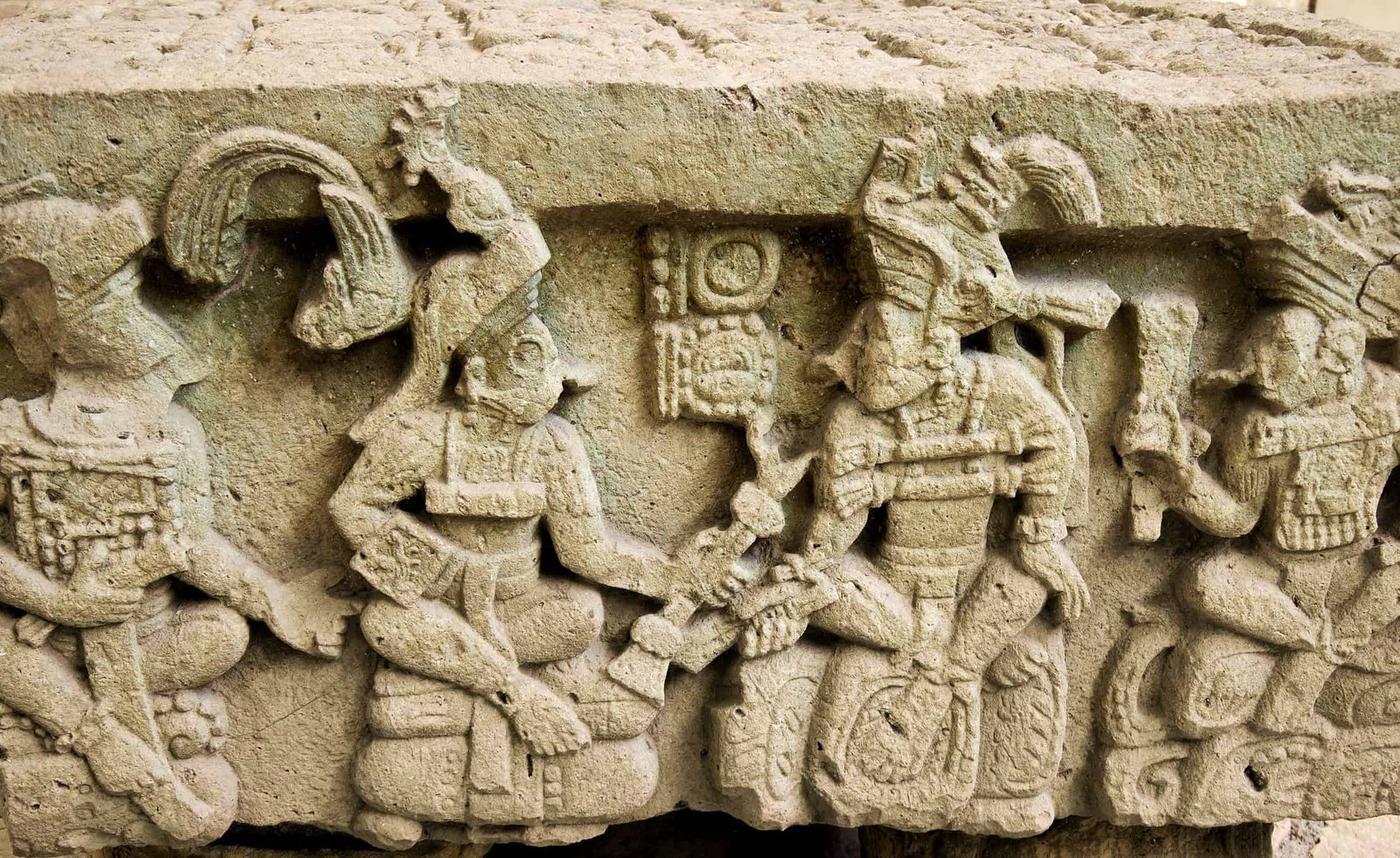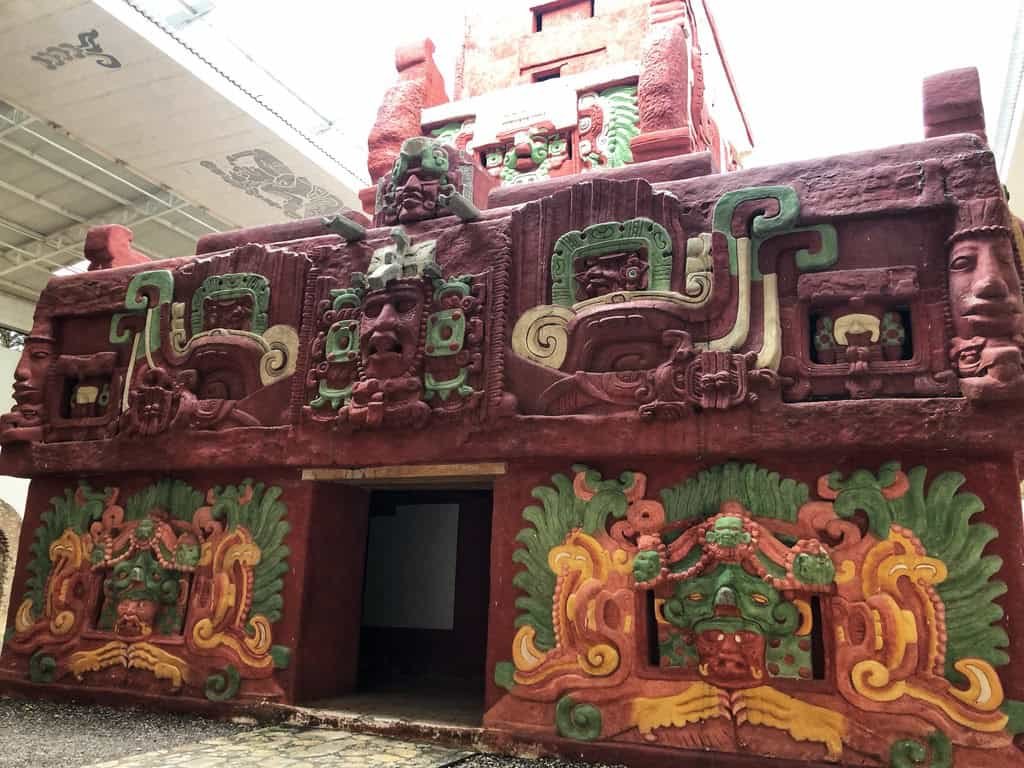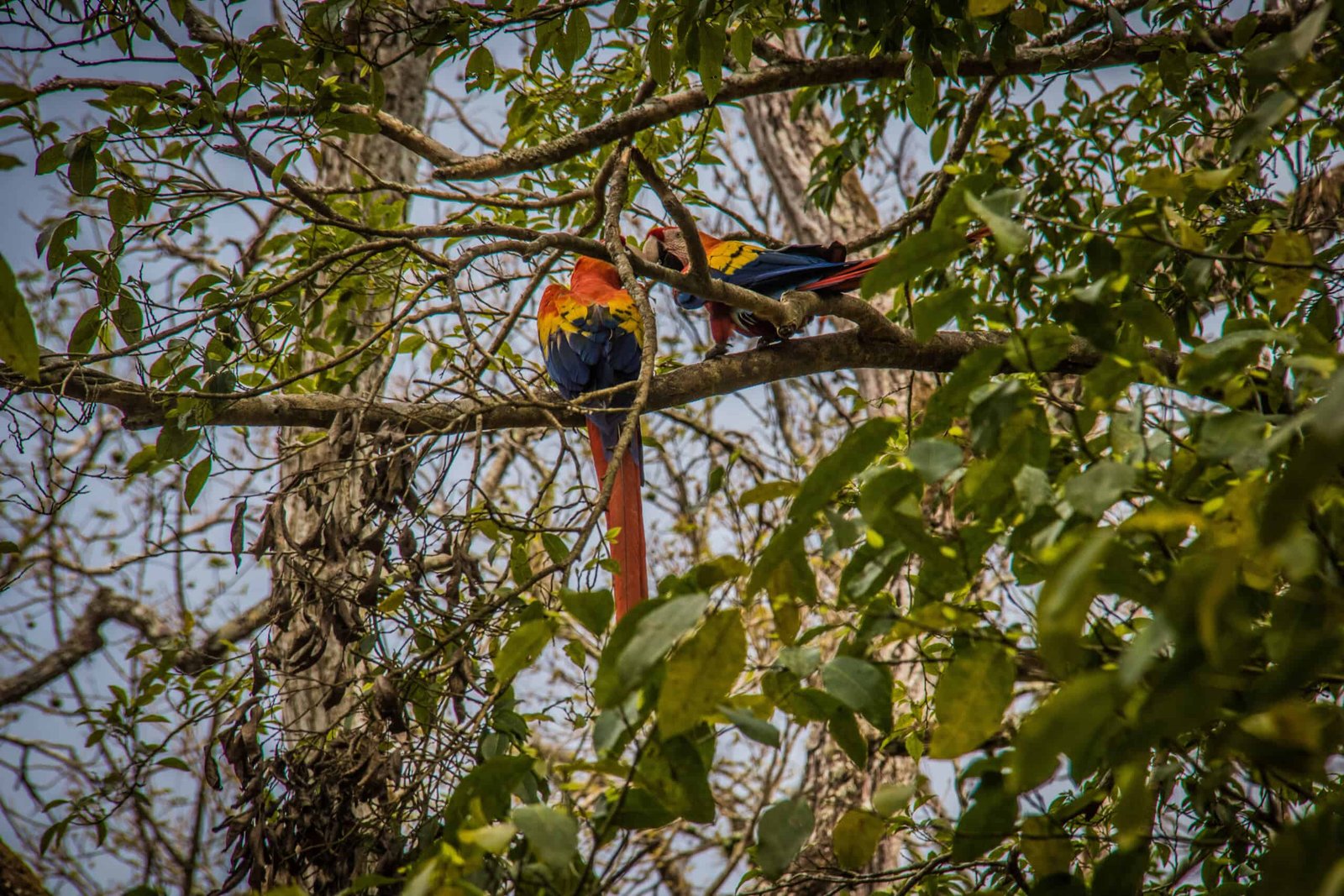Often compared to discovering secrets of the past, visiting historical ruins provides an exciting perspective into ancient cultures and civilizations. If you’re interested in Central American history, vibrant jungles, or the mysteries of the ancient Maya civilization, Copan Ruinas in Honduras is a must-visit. In this Complete Guide to Visiting the Ancient Copan Ruinas in Honduras we will tell you a little about the ruins, how to get there, what to see and some additional Copan Ruinas travel tips.
A Little About Copan Ruinas
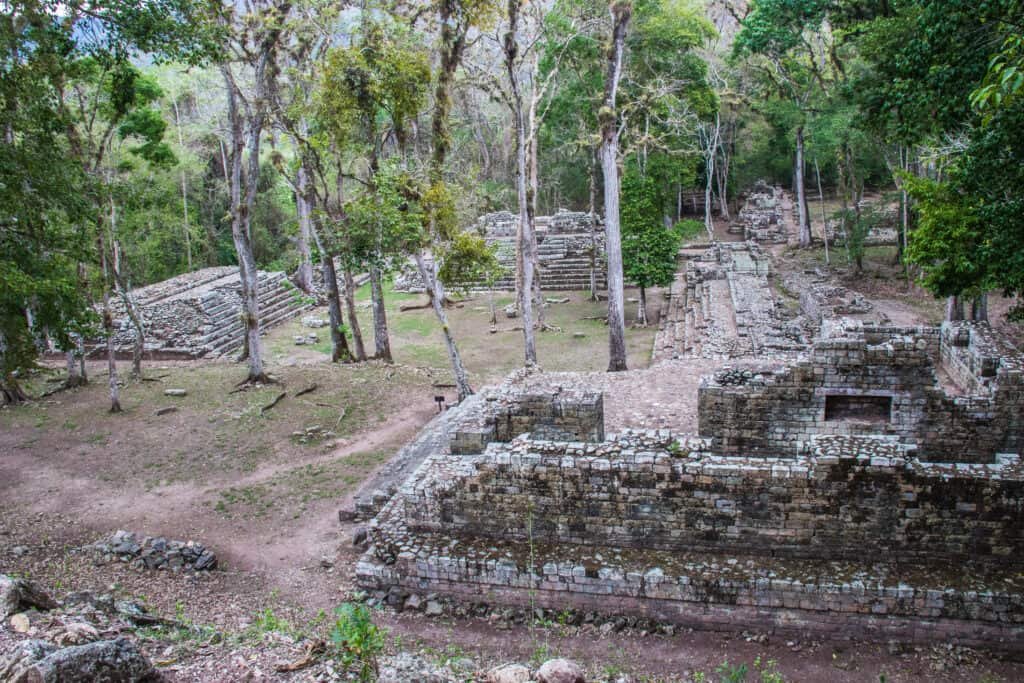
Serving as home to Mayans for over a thousand years, Copan is an ancient city nestled in the heart of the lush Honduran jungle. Known for its intricate carvings, temples, and ruins, the city was one of the most significant for the Maya civilization, but was rediscovered only in the 16th century.
Today, one can explore this UNESCO World Heritage site, interact with nature in its most primal state, and marvel at the colorful parrots flying around in the thick jungle canopy. Getting there might require a bit of travel, but whether you’re coming from San Pedro Sula in Honduras or as far off as Guatemala or El Salvador, the effort is undoubtedly worth it! We took a bus from Guatemala City to get there. It was somewhat of a long bus, I think about 5 hours.
How to Get to Copan Ruinas
Located in western Honduras near the Guatemalan border, the town of Copan Ruinas, the gateway to the archaeological site of the same name, is approximately 180 kilometers (110 miles) from San Pedro Sula or about 140ish miles from Guatemala City. Although there’s no direct flight to the town, your travel can be just as adventurous through a bus journey or a road trip
If you’re keen on cost-efficiency, the non-stop, air-conditioned Hedman Alas bus is an excellent choice. Although the quality of service leans towards the average side, it provides a safe journey. Bus tickets can be bought through the Hedman Alas website. This is the company we used and it was good and easy.
For those who have sentient wanderlust in their hearts, renting a car or hiring a private driver to take you on the scenic, winding roads to Copan Ruinas could be an enticing choice. I probably wouldn’t rent a car and drive but if you are confident in your Central America driving skills then go for it.
For those who prefer smooth logistics over adventure, consider investing in day tour packages. They provide a hassle-free experience as they include transportation and other necessities, and you can plan by checking tour options on platforms like Viator and GetYourGuide.
No matter how you reach, consider hiring a local guide once you’re at the Mayan ruins. They can bring the ruins to life with stories and professional insights as most of them studied archeology.
Visiting the Mayan Ruins at Copan and what to expect
Upon arrival in Copan Ruinas, the thrilling journey to the actual Mayan ruins starts. Being only about a kilometer from the town center, they can be reached either by a short walk or an even shorter tuk-tuk ride. If you’ve booked a tour, you’ll be taken directly to the ruins to kickstart your sightseeing expedition!
The vast archaeological park houses various artifacts and structures including temples, statues, staircases, tunnels, a ball court, and a museum. You can absorb most of its beauty in a span of two hours. However, history buffs might need longer. From vastly amorphous stupas that whisper stories of ancient civilizations to intricate hieroglyphics, there’s a lot about Mayan history to unravel here!
The archeological complex, nestled within the verdant tropical rainforests, offers an incredible exploration opportunity through its meticulously preserved ruins, unique hieroglyphs, and enthralling cultural history. If you’re planning a visit, here are some of the best things to see at Copan Ruinas.
- The Hieroglyphic Stairway: One of the most iconic sights in Copan is the Hieroglyphic Stairway — the longest pre-Columbian text in the Americas. This 63-step staircase, built under the orders of King Smoke Shell (Smoke Imix), is an incredible testament to the Mayan civilization’s literary achievements. Despite weather-induced erosion, efforts to preserve its original, beautiful carvings remain underway.

- Temple 22: Situated in the heart of the Acropolis, Temple 22 exhibits an eye-catching and fascinating design saturated with astronomical and cosmological symbolism. The monstrous facade doubling as an entrance, represents a unique Maya metaphysical concept: a portal to the other world. A visit to this temple paints a vivid picture of the advanced knowledge and beliefs held by the Mayan civilization.

- The Ball Court: Imagine a game where the stakes were life and death. Welcome to the Mayan Ball game, which was not just a sport but also a significant cultural ritual. The Ball Court at Copan Ruinas is the second-largest in Central America, complete with stone macaw heads. The markers illustrate the mythical nature and high stakes of this significant event in the Mayan society.

- Altar Q: Stand face to face with the governors of Copan, engraved in detailed stone carvings upon the unique Altar Q. The fantastic handiwork provides a chronological guide to the 16 dynasties of Copan, from the founder Yax K’uk’ Mo’ to the final ruler, Yax Pasaj Chan Yopaat, showcasing over 400 years of Mayan history at one site.

- Sepulturas Site: Expand your scope beyond the royal lives and explore the Sepulturas Site, where residents of high social standing once resided. This area provides invaluable insights into the day-to-day lives of other social classes, their architectural style, burial traditions, and more.
- The Terraced Fields: Looking at the agricultural terraces will provide insight into how this civilization sustained such a large population. Enhanced with a sophisticated water management system, these fields represent the Mayan ingenuity and understanding of their environment.
- The Copan Sculpture Museum: With a grand replica of the Rosalila Temple at its core, this museum is home to an incredible array of Mayan artwork. Visit this vibrant, red-colored museum to marvel at the intricate sculptures, carvings, and other artifacts excavated from the site.

- The Birds of Copan: Amid the ruins, countless vibrant scarlet macaws regally fly around, adding a touch of natural charm to the archaeological site. Weaving through the ancient stones and temples, their presence perpetuates ancient Mayan mythology, making a visit to Copan an even more immersive experience.

When to Visit Copan Ruinas
In general an early morning visit would be best. It is a lot cooler in temperature and there are a lot less tourists. But below is a bit more information about the seasons so you can pick which one works for you.
Dry Season: November to April
The most favorable time to visit Copan Ruinas is during the country’s dry season, which runs from November to April. The lower rainfall during these months makes exploring this archaeological gem a lot more pleasant and less impacted by weather-related closures or interruptions. January and February, in particular, offer the perfect combination of low rainfall, comfortable temperatures (average 27°C or 80°F), and lush post-rain landscapes.
Do bear in mind that this is the peak tourist time, so key attractions like the Hieroglyphic Stairway, Altar Q, and the Ball Court might be more crowded than usual. Therefore, it’s advisable to plan your day ahead, aiming to visit early in the morning or late in the afternoon to avoid large tour groups.
Shoulder Season: May to June & September to October
Shoulder seasons often provide a good balance of weather conditions and crowd size. During May and June, you will experience the start of the rainy season with sporadic showers, usually in the afternoon or at night, but it’s not so severe that it significantly hampers exploration. The same applies for late September and October, but you should be prepared with waterproof gear. As fewer tourists visit during these times, you can soak in the historical site’s beauty in relative peace and quiet.
Wet Season: July to August & October to mid-November
The wet season in Honduras, primarily from July to August and October to mid-November, sometimes features heavy showers. Still, this shouldn’t dissuade the more adventurous travelers. The landscape during the rainy season is as bright and lush as ever, and the beauty of the park under rainfall has a charm of its own. However, it’s important to note that rain can make some areas slippery and harder to access.
Is Copan Ruinas Safe?
Travelling to an unknown land always raises questions and safety is often one of the first concerns that travelers have. When it comes to Honduras and specifically Copan Ruinas, safety considerations deserve a balanced perspective. Though the country has had its struggles with crime, this small, historically rich town presents a different side of the story. So, if you’re left wondering, “Is Copan Ruinas safe?” here’s what you need to know.
General Safety:
Compared to the larger, more chaotic cities in Honduras, Copan Ruinas is generally considered safe for travelers. It’s a small, tourist-friendly town that thrives on visitors coming to see the UNESCO World Heritage archaeological site. The locals are largely welcoming and hospitable, and violent crimes are rare. However, like any travel destination worldwide, it is recommended to use some amount of personal discretion and common sense to prevent unpleasant incidents.
Around the Copan Ruinas:
The archaeological site of Copan Ruinas is a well-protected, important tourism spot. It’s regularly patrolled, well maintained, and quite safe to navigate. As with any travel site, adhering to marked trails, respecting area restrictions, and not wandering alone during off hours is advisable.
Other Copan Ruinas Tips
Embarking on an adventure to the ancient city of Copan Ruinas, Honduras, requires thoughtful preparation to ensure a memorable and smooth exploration of this historical wonder. Here are some practical tips to guarantee you make the most out of your fascinating trip.
Choosing Your Accommodation:
Copan Ruinas town is a hospitable place with a myriad of delightful hotel options catering to different budgets and preferences. For a mesmerizing jungle view and a friendly atmosphere, consider visiting establishments such as Hotel La Escalinata. We stayed at Hotel Marina Copán which was excellent and the pool was super refreshing after a hot day at the ruins. The location was also good for visits to the main square. For a more economical option, Hostel Iguana Azul will work just fine.
Dining in Copan:
For a gastronomic adventure, Visit Los Asados, located near the town center, known for its mouth-watering food and generous servings. The grilled meats I had there we so so good! Enjoy your tropical dinner varied with local specialties such as mixed meat with chicken, beef, and sausages, served with plantains and refried beans. Try local coffee at Cafe Welchez and even grab a bag of beans to take home! Remember that most places operate on cash, so keep some handy when you’re out to grab a meal.
What to Pack:
Remember, Copan lies in the tropics, so prioritize lightweight, breathable clothing that can handle warmth and humidity. Shorts and flip-flops are acceptable, but be conscious of dressing respectfully as Copan Ruinas holds religious and historical significance for the locals.
Money:
While credit cards are accepted in certain places, including the Mayan ruins, cash is king in the local economy. Keep some Honduran lempira or US dollars handy to manage transaction requirements. If you run out, don’t worry—there are functional ATMs conveniently located within the town of Copan Ruinas.
Exploring with Tour Guides:
To enhance your understanding of the archaeology, history, and significance of Copan Ruinas, consider hiring local guides who are usually present at the entrance to the archaeological park. Their prices may range between $30-$40 USD, variating on the size of the group. It’s well worth the money in my opinion. Our guide was great.
Essential Amenities:
The park entrance is equipped with restroom facilities, but they aren’t available once you’re exploring the ruins. Similarly, small shops at the entrance will allow you to stock up on snacks and drinks for your exploration journey.
Staying Connected:
Fortunately, the Copan park region is covered by cell service, making communication seamless during your travel. It’s especially helpful if you are coordinating transportation. If you need a eSim card I recommend Airalo, click here to check them out.
Protecting Against Bugs:
Even though bugs and mosquitoes aren’t prevalent during the dry season, carrying bug spray could be advisable, particularly during the wet season when their population might increase. Malaria is generally not an issue at Copan, so taking anti-malarials is not necessary.
Discovering Wildlife:
Amidst the ancient structures, experience the joy of observing the region’s rich biodiversity. Look out for the stunning scarlet macaws, or watch the trees for other vibrant feathered creatures. If luck favors, you might also catch sight of regional monkeys and other animals. There is also a great nature reserve/bird park in the area that we went to called Macaw Mountain. It’s a lovely hike through the reserve where you can see all types of birds that are there for rehabilitation reasons.

